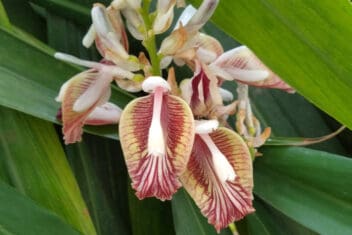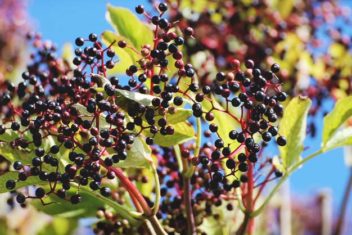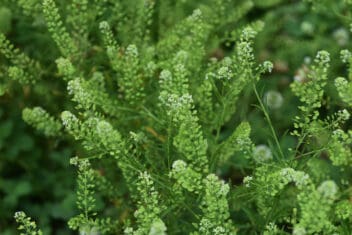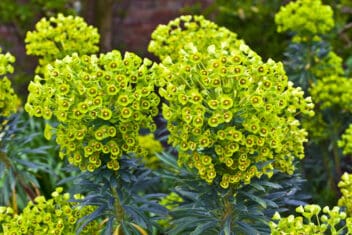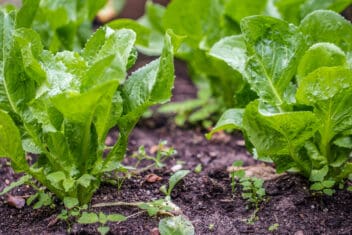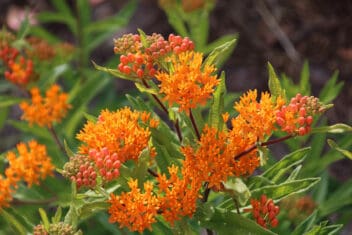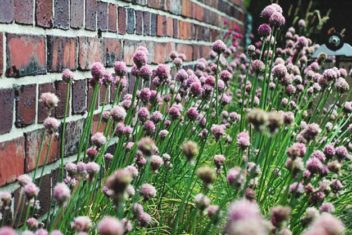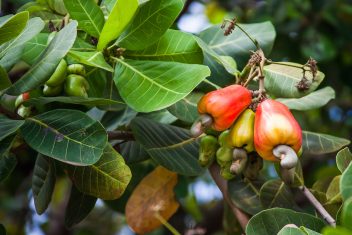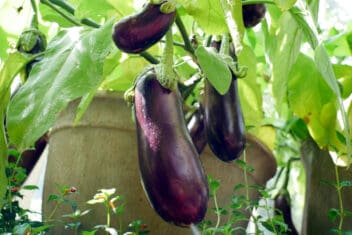Kumquats are tiny tasty fruits that look like mini oranges. The flesh is a little sour, while the skin is sweet, giving them a unique flavor. Growing kumquats has become popular because they’re easy to grow and quite beautiful.
In spring, the kumquat tree is covered in lovely little white flowers with a bold citrus fragrance. They make stunning ornamental additions to the garden or in containers, indoors or out.
If you want to try growing these lovely, grape-sized citrus fruits, we’ll guide you through, so let’s get started.
Varieties of Kumquat
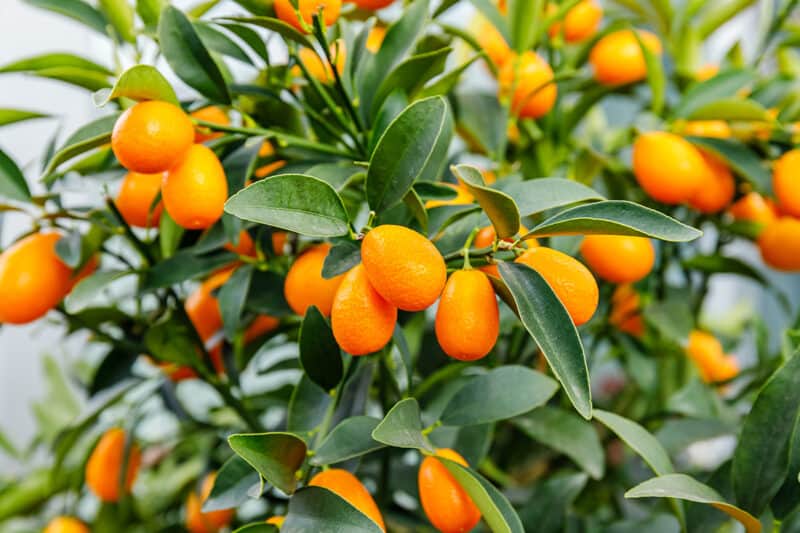
Kumquats (Citrus japonica) are native to eastern Asia. The fruit can be round or oblong.
Nagami
This is a popular variety with oblong rather than round fruits. It can have a few too many seeds for my taste, with anything from two to five seeds in each fruit. The flavor, however, is outstanding.
Meiwa
A little larger than ‘Nagami,’ ‘Meiwa’ is a great pick for the home garden. It has sweeter pulp and juice than other kumquat and is often seedless.
It’s a semi-dwarf variety, so it stays more compact than some others.
Marumi
A good variety for containers, ‘Marumi’ will bear a lot of fruit in the right conditions. If you’re growing it in a pot, every two seasons you’ll likely need to remove the tree from the pot to trim the roots back a little bit.
Centennial Variegated
If you can get hold of ‘Centennial Variegated,’ this is my top pick for you. Thought to be a cross between a ‘Nagami’ kumquat and a mandarin, this is an extremely sweet variety that lasts for months on the tree once ripe.
The fruit can be varied in color, until they ripen to orange.
‘Centennial Variegated’ can grow in USDA Hardiness Zone 8, and I personally would give it a try.
How to Plant Kumquats
Kumquats are easy to grow, so they’re a good tree for both beginners and experienced gardeners. They’re self-pollinating, so you only need to plant one.
Kumquats grow well in USDA Growing Zones 9 to 10.
If you live somewhere that gets colder, you can always grow it in a container and move it around with the sun, and bring it inside in the winter.
Kumquats require full sun. They don’t do well in shaded areas unless you live in a scorching area. Then they’ll tolerate partial shade in the hottest part of the day.
Loamy, well-draining soil that can stay moist is best for kumquats. Aim for a pH of 5.5 to 6.5.
Plant in the spring when sunny days are consistent. Kumquats are hardy, and once the sun starts shining in spring, you can start planting. Don’t get too hung up on waiting for perfect planting conditions.
Container Planting
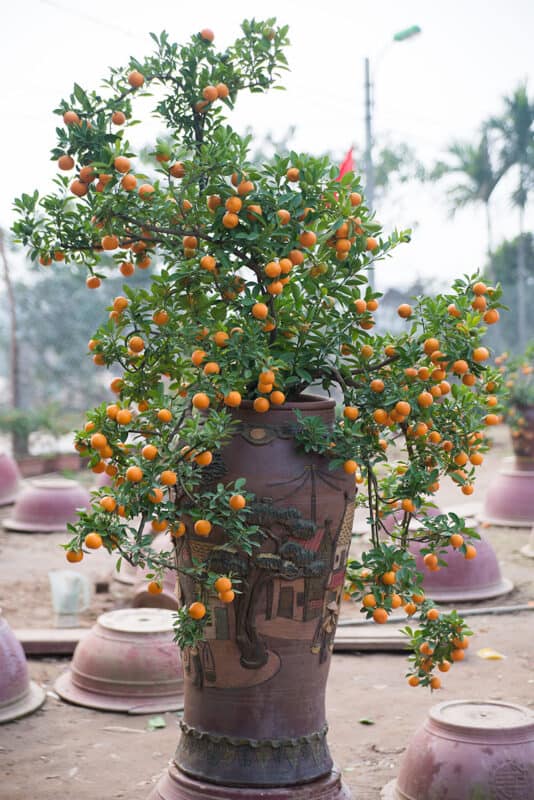
Kumquats do well in containers if you follow a few basic principles.
Like most citrus, they don’t like being root bound in pots. To avoid this, use the biggest container that you can.
Kumquats don’t like soggy feet, so make sure you use a container that drains well. Carefully cut or drill additional drainage holes if necessary.
Planting Kumquats by Seed
Planting by seed isn’t the best route. It’s a laborious process, and the resulting tree may be weak or thin. Still, it can be a fun project to see if you can create a new tree.
Pick a healthy kumquat fruit in the fall. In order to separate the seeds from the flesh, place the peeled kumquat in a glass of water. Within a couple of days, the fruit will become soft.
Mash the pulp gently and put it in clean water. The seeds that float to the top are viable, so save them. Place them on a paper towel to dry for a week.
Place the seeds in moist peat moss and put them in a plastic bag. Put this in the fridge until spring. Make sure the peat moss remains moist. Give it a spray to moisten if it starts to dry.
In spring, lay the seeds on top of seed raising mix and cover lightly. Place the whole container in a plastic bag, and keep moist.
Keep the container on a window sill until germination.
Planting Transplants
Plant in full sunshine in loamy, well-draining soil. These plants can’t handle clay soil.
Make sure the soil stays moist for the first few years. Stake the tree if it’s planted in a windy area.
If you plant your kumquats as a hedge, space the trees five feet apart. If you plant the trees in an orchard, space them about 12 feet apart. Most trees grow up to 15 feet in height.
Caring for Kumquat Trees
Once you have kumquats in the ground, it’s time to make sure they keep growing healthy and happy. Here’s how to make that happen.
Fertilizer
Don’t fertilize for the first three months after planting the tree. After that, fertilize once every two months during the growing season.
I use liquid fertilizer containing fish or seaweed. You can also use a granular citrus fertilizer.
If you use dry fertilizer, make sure you water before you fertilize and then directly afterward. Kumquat roots can be sensitive to fertilizer.
Water
Keep the soil moist but not wet. You can allow the surface to dry out, but once the soil is dry an inch deep, water well. Kumquats are susceptible to root rot, so don’t overwater.
If your kumquats are in containers, give them a deep watering when the top inch of the soil dries out. Water until it runs out of the bottom of the pot.
Pruning
I prune kumquats purely for shape because I have them as a hedge in front of a deck.
If you prune to shape, do so after fruiting and before the flowers appear for next season, during the dormant season.
Otherwise, remove any crossing branches to increase air circulation. Remove any diseased or dead branches.
Companion Planting for Kumquat
Kumquat grows well when planted alongside other citrus such as:
- Lemon
- Lime
- Grapefruit
Also plant with:
- Borage
- Nasturtium
- Fennel
- Lemon Balm
- Tansy
Common Problems and Solutions for Growing Kumquat
As with most citrus trees, there are a few problems you might need to watch for when it comes to growing kumquats.
Practice good garden hygiene and keep soil healthy and well-fed. Address any issues with pests and disease as soon as you notice something is wrong.
Mealybug
Mealybugs are sap-sucking pests that often live on the undersides of leaves, making them hard to target with spray.
They excrete honeydew, which in turn attracts ants and often contributes to sooty mold.
To control mealybugs, clear away all debris like long grass and weeds, which they can overwinter in. Remove fallen fruit from the ground at the end of the season.
Dilute isopropyl alcohol 1 to 5 and spray plants to kill these bugs.
Aphids
Another sap-sucking insect, aphids cause a lot of damage when they get too large in number.
They also excrete honey dew which can attract sooty mold.
I use neem oil and organic pyrethrum for a knockdown and long term effect combination. We have a guide to help you identify and manage these bugs.
Root Rot
Root rot in citrus is often a result of the roots sitting in water for too long. The roots die because of a lack of oxygen.
Root rot can also be caused by a fungus in the soil.
Prevention is better than the cure for root rot, so make sure soil is well-draining and don’t overwater.
Sooty Mold
As the name suggests, if you have this disease, your plant looks as if it’s covered in black soot.
Treat the source of the mold. Look for mealybugs, aphids, or any of the other pests that excrete honeydew.
Treat the problem pest, and you will get on top of sooty mold. Once the pest issue is addressed, you can wipe the mold off plants with a wet cloth. It’s just superficial.
Harvesting and Using Kumquat
Kumquats are ready to harvest when they’re a deep orange and the skin is slightly soft to the touch.

Eat the whole thing or use in fruit salad, stews or casseroles, and marmalade. Candied kumquat is a favorite of my children.
You can store them in the refrigerator for several weeks.

